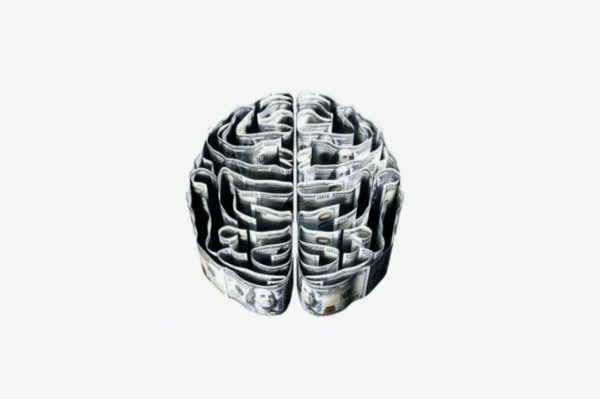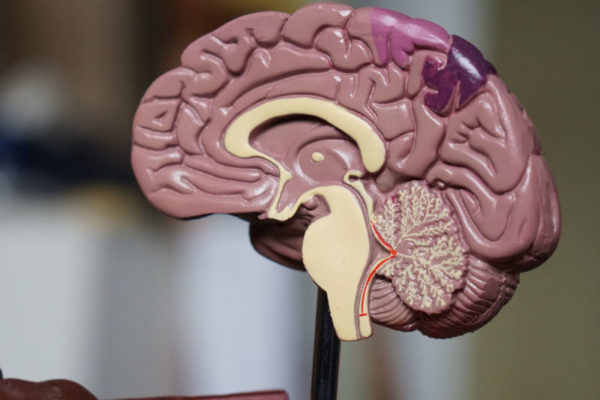
Perhaps you’ve heard the term PTSD before or are familiar with terms such as trauma therapy, depression, high functioning anxiety, or mental health. Perhaps you have struggled with finding emotional wellness or have experienced mental illness yourself. Perhaps you’re just curious about learning more. Regardless of what brought you here, we’re glad you found your way.
Mental health, emotional distress, trauma, and recovery are all things you shouldn’t have to hide or feel like you need to handle all on your own. The truth is, many of us in our lifetime will experience some form of mental unwellness, and it’s important to know how to navigate this experience and where to go for support.
In this article, you will learn about the history of psychiatry and PTSD and the current understanding of trauma disorders. You’ll also get a snapshot into signs, symptoms, triggers, and risk factors, as well as treatment options. And above all else, you’ll learn that you’re not alone, there is always a solution, and you don’t have to sit in isolation suffering from your mental health. There are effective forms of trauma therapy out there for you, waiting to help you heal your PTSD.
History of Psychiatry

Before we learn how to move forward, let’s take a look back on where we have been.
Have you ever inquired about the workings of your mind? Have you ever wondered why learning about psychology and mental health is important? Have you thought about seeking support or thought about the barriers preventing you from doing so?
Psychology, mental health, counseling, and therapy hold a high emotional charge for many, and seeking treatment can be controversial! Despite overwhelming attention and support in recent years from all media outlets, many people still hold stigma towards going to therapy. The Canadian Mental Health Association reports that 1 in 5 Canadians will personally experience a mental health problem at some time in their lives but only about half of those will seek support from a doctor.
So what’s holding people back?
Even though therapy is proven to work and benefit all walks of life, there’s still a negative connotation attached to it – let’s explore why!
Afflictions of the brain and mind can be traced far back into human history with primitive examples of psychosurgery and other forms of mental health care treatments.
One of the first forms of mental health support can be seen in trephination, a medical treatment where a hole is drilled into the human skull. It was performed on those who were acting strangely or abnormally, and the hole was meant to relieve their psychological suffering. The root cause of the mental illness was often presumed to be supernatural or the doings of evil spirits. Whether it worked or not to improve mental health, it’s hard to say, but that legacy of “it’s all in your head” or there’s something supernatural or crazy going on persists to this day, and deters those in need from seeking real and appropriate treatment.
As we move further through history, we see many different theories for mental health and disease, as well as many creative solutions for how to treat them.
Psychology, the study of the mind, hasn’t even always been limited to the mind, as it was assumed for some time that it was the heart that gave rise to thought and intelligence, and the brain and other organs were there to serve other bodily functions.
Another medical theory, that placed importance on an organ other than the brain, was Humorism, which posited that all diseases, including psychiatric diseases, were caused by an imbalance in 4 bodily fluids. These 4 fluids, or humors, were said to be produced by the liver and included blood, phlegm, yellow bile, and black bile. Treatment of certain psychiatric disorders involved the effort to “balance” the fluids, which was often achieved through adjusting diet and exercise, and in extreme cases, bloodletting or the removal of other fluids through medical extraction.
Today, we continue to recognize the connection between mind and body wellness, albeit, with slightly less gruesome approaches. Most present-day health-care providers believe that the body and mind work together and influence your health, however, approaches to mental health continue to differ based on the condition and the treatment philosophy. Although rest assured, if you visit a counselor for trauma therapy, chances are they won’t try to cut a hole in your skull.
Psychiatric Hospitals

Many approaches to mental wellness have been attempted over the years, each contributing their own unique heritage to how we view mental health today. As we move through history and look at the origins of psychiatry, treating the mind has always been a bit of a mystery, both alluring and dangerous.
Nothing else painted this picture of mystery and danger quite like the mental asylum.
Before the 20th-century asylums were built to house those suffering from extreme psychiatry conditions, usually of “unknown origin”. Later on, the intention of the asylum, or psychiatric hospital, was to have a safe, quiet, and secluded place where patients could truly heal from their emotional distress. However, this is not the image most of us have in our heads when we hear the term psychiatric hospital. These “madhouses” have often been depicted in popular media as exactly that, a place for the mad, or the dangerous and deranged. Not only is that portrayal incorrect, but once again, it severely damages the public’s view on therapy and what it means to seek treatment.
Let’s squash one myth right now, having mental health issues doesn’t make you crazy, experiencing trauma doesn’t make you dangerous, and going to therapy doesn’t mean there’s something wrong with you. All it means is you are human and doing your best.
Modern Psychiatry

The majority of you are likely most familiar with modern psychiatry, and concepts such as the id, ego, and super-ego, or pavlovian conditioning. Many of these references have made their way into popular culture, or at the very least, into every “intro to psychology” textbook ever written.
Perhaps one of the most well-known psychiatrists ever, Sigmund Freud has been heralded as the father of modern psychology with his concept of psychoanalysis and talk-therapy. In other words, we have Freud to thank for psychotherapy!
Other notable psychologists throughout history include Carl Jung, famous for his work on individuation and the collective unconscious, B.F. Skinner and behaviorism, Aaron Beck, the father of cognitive-behavioral therapy (CBT), and Oliver Sacks who brought odd neurological conditions into the mainstream. The movie Awakenings, starring Robin Williams was based on Oliver Sack’s book of the same name.
Although the popularity of psychology helps the general public normalize mental health, there’s still a lot of work to do in fully accepting therapy and counseling as necessary and legitimate forms of healthcare for everyone!
History of PTSD and Trauma Disorders

It’s estimated that about 8% of Canadians will experience PTSD in their lifetime, with rates suggested to increase owing to the Covid-19 pandemic. The realization that experiencing trauma has profound impacts on the mind and subsequent behavior and quality of life are the first steps in normalizing trauma therapy and other forms of PTSD counseling.
And much like psychiatry as a whole, PTSD has a unique history and legacy with the general public.
It has long been recognized that life circumstances can create psychological disturbances. From old stories referring to grief-stricken women going mad after heartbreak or men falling into panic and depression after losing friends in battle. These expressions of trauma are not caused by physical ailments but from the fright of experiencing something intense and emotionally damaging.
Although grief-related mental illnesses have been well-documented for ages, it wasn’t until the 1980’s that the term PTSD, post-traumatic stress disorder, would find its way into the Diagnostic and Statistical Manual of Mental Disorders (DSM), the handbook used by medical professionals to diagnose mental illness.
Initially, post-traumatic states were referred to as “cardiorespiratory neurosis” or “idiotism” to describe the personality and behavioral changes in those who had experienced a traumatic event.
Examples of PTSD are seen throughout history, labeled with various names following traumatic experiences such as natural disasters, devastating workplace accidents, and war.
Perhaps the most well-known early cases of PTSD, come from soldiers experiencing “shell-shock”. Not only was it seen in soldiers returning from the war, but it was also notable while soldiers were still on the front lines. One of the most commonly viewed symptoms was dissociation from the environment, resulting in many psychiatric related causalities on the battlefield. Nearly every single soldier displaying mental symptoms experienced and witness significant trauma, whereas only 20% also had a physical injury. This helped doctors rule out a physical cause of symptoms, and lead them to believe their “wounds” were psychiatric in nature.
The initial symptoms of shell shock were loss of memory, vision, smell, and taste but later went on to encompass tremors, confusion, fatigue, and nightmares as well.
Despite this distinction between physical and psychological symptoms, there was still confusion about the true origin of shell shock. Some theorized that symptoms were caused by microscopic lesions on the brain whereas others were convinced the symptoms were due to emotional stress. Others even questioned whether the symptoms were authentic and nothing more than an effort to get out of fighting on the front lines. Before this, it was assumed that only childhood trauma had a subsequent effect on personality, and now there was conflicting information that recent traumas from adulthood could also alter personality and affect the mind.
After the second world war, studies were conducted and PTSD was described as “affective shock reactions”, a type of psychiatric reaction that occurs after events such as war, natural disasters, and other accidents. Although this was described as a psychiatric disorder, physical markers such as cardiovascular symptoms were also emphasized as part of it.
In the decades to follow, PTSD would be extensively studied with research revealing that the majority of afflicted soldiers still experienced symptoms decades after battle. Symptoms such as intrusive thoughts and nightmares, an effort to block or avoid these painful thoughts, survivor’s guilt, and permanent personality changes were all noted as persistent issues.
This history is important to cover and appreciate, as it allows us to better understand PTSD, and it also speaks to the severity and complexity of trauma. PTSD and other trauma disorders manifest as both physical and psychological symptoms and they can persist for decades, even after treatment has been administered.
Barriers to Trauma Therapy

Once again, let’s bring your attention back to how the history of PTSD has shaped our current view of seeking treatment. PTSD can go undiagnosed because many downplay their trauma with justifications such as, “well it’s not like I’ve been to war” or “it could have been worse”. This mindset of it being a “soldier’s disease” is a huge barrier to going to trauma therapy. Unfortunately, PTSD does not discriminate and can affect a variety of people, from different walks of life, experiencing many different forms of trauma. The important thing to keep in mind is your experience is always valid and you’re deserving of symptom relief. The fear of appearing crazy coupled with the mindset of trauma being reserved for veterans is really damaging and limiting to those who can benefit from PTSD treatment.
Post-Traumatic Stress Disorder

PTSD is unique among mental health conditions because of the emphasis placed on environmental factors, or the type of trauma that causes the stress response. Patients have to have experienced a traumatic event and also display symptoms to be diagnosed with PTSD. These traumatic stressors typically have to be outside of what is considered “normal” life stressors and include events such as war, torture, rape, natural disasters, or human-made disasters such as airplane crashes or workplace explosions.
However, as with any mental health condition, there are great differences among individuals and their ability to cope with stress. It’s understood that some people exposed to traumatic events develop PTSD and others don’t and some people exposed to more ordinary life stressors will develop PTSD symptoms and while others won’t. Like all other aspects of human experience, traumatic experiences are filtered through cognitive and emotional processes and we don’t all process these experiences the same way. These individual differences in emotional processing explain why not everyone who is exposed to a traumatic event suffers from it long-term.
The take away here is that you’re unique and you never have to apologize for the way your brain works or the symptoms you’re experiencing.
PTSD Triggers and Risk Factors

Most people will exhibit some symptoms after experiencing a traumatic event short-term, however, symptoms that persist or worsen may indicate PTSD.
PTSD triggers:
- War and conflict
- Serious accidents or human-made disasters
- Abuse, including childhood or domestic
- Sexual or physical assault
- Rape
- Torture
- The unexpected death of a loved one
- Serious health problems or disease
- Losing a baby or having a miscarriage
Certain circumstances or individual differences may also increase the risk of developing PTSD
Some PTSD risk factors:
- History of mental illness, specifically depression and anxiety
- Living through numerous dangerous events or traumas
- Seeing someone else get hurt or die
- Having little or no support from family and friends after a traumatic experience
- History of substance abuse
Signs and Symptoms

PTSD is characterized by a group of symptoms which are often organized into 4 categories:
- Re-experiencing symptoms
- Avoidance symptoms
- Arousal symptoms
- Cognitive and mood symptoms
Re-experiencing:
- Flashbacks
- Nightmares and bad dreams
- Intrusive, repetitive, frightening thoughts, images, or sensations
- Physical sensations such as tremors, pain, sweating, and nausea
Re-experiencing is the most common PTSD symptom. It can start from the individual’s own feelings or thoughts or can be triggered by situations that remind them of the traumatic event.
Avoidance:
- Avoiding people, places, events, or objects that are reminders of the traumatic event
- Avoiding talking about the experience
- Avoiding any thoughts or feelings related to the traumatic experience
Individuals with PTSD will attempt to push all feelings associated with the trauma away or push all emotions away resulting in emotional numbing. This can result in people becoming very withdrawn and isolated or giving up experiences they once enjoyed.
Arousal:
- Irritability
- Anxiety
- Difficulty relaxing
- Angry outbursts
- Being easily startled
- Insomnia
- Difficulty concentrating
- Feeling “on edge”
- Reckless or self-destructive behavior
Arousal symptoms are usually more constant as opposed to being triggered and they make a person feel stressed and tense. Arousal symptoms can result in difficulty accomplishing daily tasks such as eating regularly, sleeping, and concentrating.
Cognition and mood
- Memory loss
- Negative thoughts of the world
- Feelings of low self-worth
- Distorted feelings of guilt
- Apathy and depression
- Feelings of detachment
- Persistent negative emotions
Other symptoms
- Increase in mental health disorders: depression, anxiety, phobias, substance abuse
- Physical symptoms such as headaches, chest pain, stomach aches, nausea, and dizziness
PTSD Diagnosis

Although the symptoms listed above can be present in other psychiatric and non-psychiatric disorders, to be diagnosed with PTSD certain other criteria must be met
- Exposure to a traumatic event either first-hand, witnessing it, learning that it happened to a close friend or family member, or repeated exposure to aversive details of a traumatic event (usually through work).
- At least one symptom from re-experiencing and avoidance, and at least two symptoms of cognition and mood and arousal.
- Duration of symptoms for at least 1 month.
- Symptoms cause significant distress or impairment to your regular daily functioning.
- Symptoms are not attributed to the physiological effects of medications, substance abuse, or other medical conditions.
If symptoms persist longer than 4 weeks it may be time to see a health care provider or a psychiatrist near you to help give you the best treatment available.
PTSD Treatment

Traditional treatment options for PTSD include medication, psychotherapy, or both. The most commonly prescribed medications for PTSD are antidepressants, however other medications for specific symptoms might benefit patients as well, such as sleep aids. Psychotherapy or “talk therapy” involves a mental health professional, usually someone trained in trauma therapy or PTSD counseling. Talk therapy can occur one-on-one or in groups, but the premise is usually centered around coping with symptoms. Most PTSD therapy is a minimum of 6-12 weeks, whereas some patients require months or years of therapy to work through their experience.
Cognitive-behavioral therapy (CBT) is often used to treat PTSD, where patients learn to confront and reshape their fears and restructure their traumatic experience more realistically.
Psychotherapy can help with:
- Learning about trauma and the effect it has
- Relaxation and controlling anger
- Sleep and other lifestyle factors such as diet and exercise
- Improving feelings of self-worth
- Shedding guilt, shame, and blame
- Changing reactions to PTSD symptoms
- Managing triggers
Reconsolidation Therapy ™

Another great treatment option available is Reconsolidation Therapy ™, a revolutionary trauma therapy developed by Dr. Alain Brunet, McGill.
Unlike traditional treatment for PTSD, Reconsolidation Therapy ™, uses a combination of talk therapy and a non-psychoactive medication called propranolol. Propranolol is a blood-pressure lower medication and when used in conjunction with trauma therapy, the treatment is extremely effective at mitigating PTSD symptoms. Reconsolidation Therapy ™ succeeds in reconsolidating memories without the painful emotional response associated with the traumatic event itself.
This is groundbreaking for PTSD treatment because unlike tackling coping mechanisms or developing skills to reduce triggers, Reconsolidation Therapy™ relieves the suffering caused by the trauma while leaving the original memory intact. In addition to being an effective form of trauma treatment, Reconsolidation Therapy ™ has extremely high success rates and low relapse rates. The treatment course takes 6-8 weeks and provides long-lasting and sustainable relief from PTSD symptoms.
What Else Can You Do?

In addition to seeking the support of a psychiatrist or trauma counselor you can also:
- Talk with a variety of health care professionals about treatment options
- Engage in physical activity to help reduce stress
- Work with trained professionals who specialize in trauma therapy
- Set realistic daily goals and break up large tasks
- Spend time with loved ones who support you and your healing
- Be gentle but realistic with yourself about healing time
Throughout the history of psychiatry, there has always been an intrinsic link between the body and mind, and we see that connection is strongly pronounced in PTSD. We’ve come a long way in our view and treatment of PTSD and other trauma-related disorders, but there’s still a ways to go!
Mental health has a long history of stigma and fear and part of reshaping that view is through education, effective treatment options, and open discussions around mental health and wellness. You don’t have to suffer from your trauma in isolation, search “psychiatrists near me“, check out trauma therapy resources, and remember it’s OK to need support.
Resources + References
American Psychiatric Association. Diagnostic and statistical manual of mental disorders. 5th ed. Arlington, VA: American Psychiatric Association; 2013.
Brunet, A., Saumier, D., Liu, A., Streiner, D. L., Tremblay, J., & Pitman, R. K. (2018). Reduction of PTSD Symptoms With Pre-Reactivation Propranolol Therapy: A Randomized Controlled Trial. American Journal of Psychiatry, 175(5), 427-433. doi:10.1176/appi.ajp.2017.17050481
Canadian Mental Health Association. (2019). Fast Facts about Mental Illness. Retrieved 2020, from https://cmha.ca/fast-facts-about-mental-illness
Corcq, M., & Crocq, L. (2000). From shell shock and war neurosis to posttraumatic stress disorder: A history of psychotraumatology. Dialogues in Clinical Neuroscience, 2(1), 47-55.
Friedman, M. (n.d.). PTSD History and Overview. Retrieved 2020, from https://www.ptsd.va.gov/professional/treat/essentials/history_ptsd.asp
Hoppen, T. H., & Morina, N. (2019). The prevalence of PTSD and major depression in the global population of adult war survivors: A meta-analytically informed estimate in absolute numbers. European Journal of Psychotraumatology, 10(1). doi:10.1080/20008198.2019.1578637
Lonergan, M., Olivera-Figueroa, L., Pitman, R., & Brunet, A. (2013). Propranolol’s effects on the consolidation and reconsolidation of long-term emotional memory in healthy participants: A meta-analysis. Journal of Psychiatry & Neuroscience, 38(4), 222-231. doi:10.1503/jpn.120111
Maercker, A., & Hecker, T. (2016). Broadening perspectives on trauma and recovery: A socio-interpersonal view of PTSD†. European Journal of Psychotraumatology, 7(1). doi:10.3402/ejpt.v7.29303
National Health Services. (2018). Symptoms of Post-Traumatic Stress Disorder. Retrieved 2020, from https://www.nhs.uk/conditions/post-traumatic-stress-disorder-ptsd/symptoms/
National Institute of Mental health. (2019). Post-Traumatic Stress Disorder. Retrieved 2020, from https://www.nimh.nih.gov/health/topics/post-traumatic-stress-disorder-ptsd/index.shtml
Penn Nursing (n.d.). History of Psychiatric Hospitals. 2020, from https://www.nursing.upenn.edu/nhhc/nurses-institutions-caring/history-of-psychiatric-hospitals/
